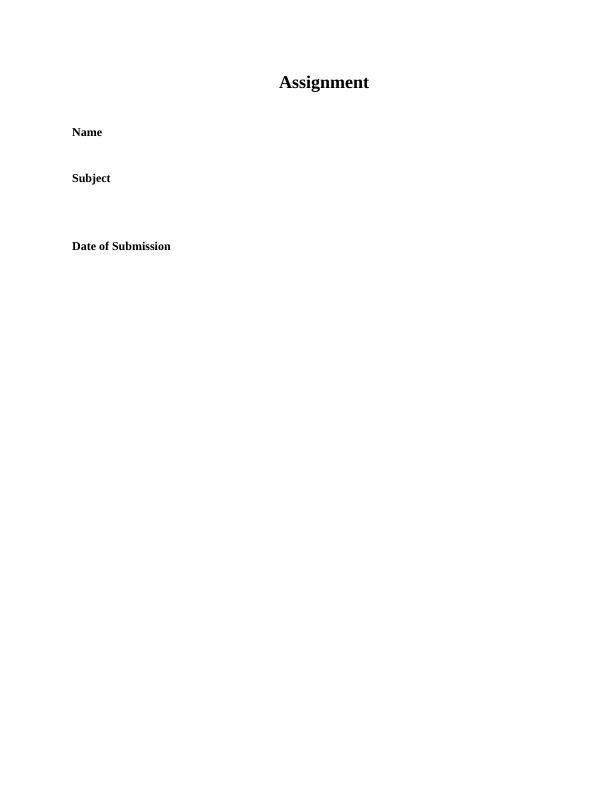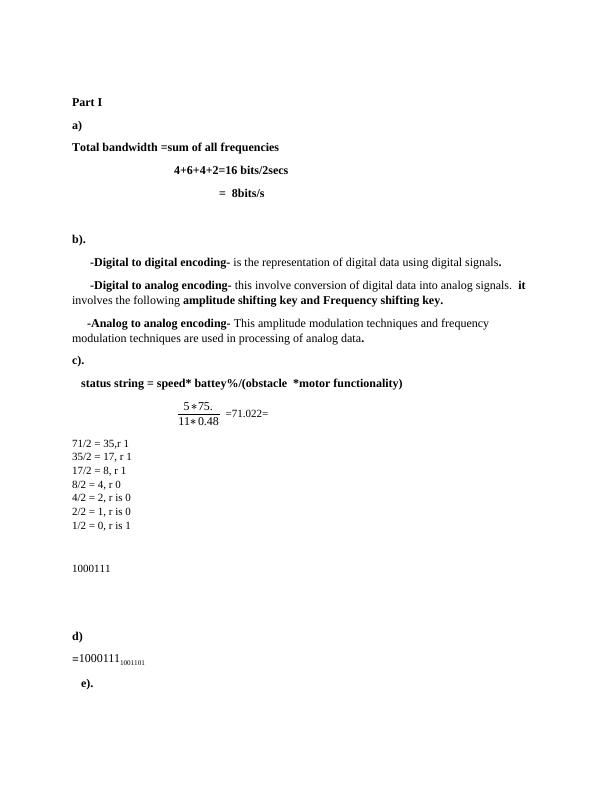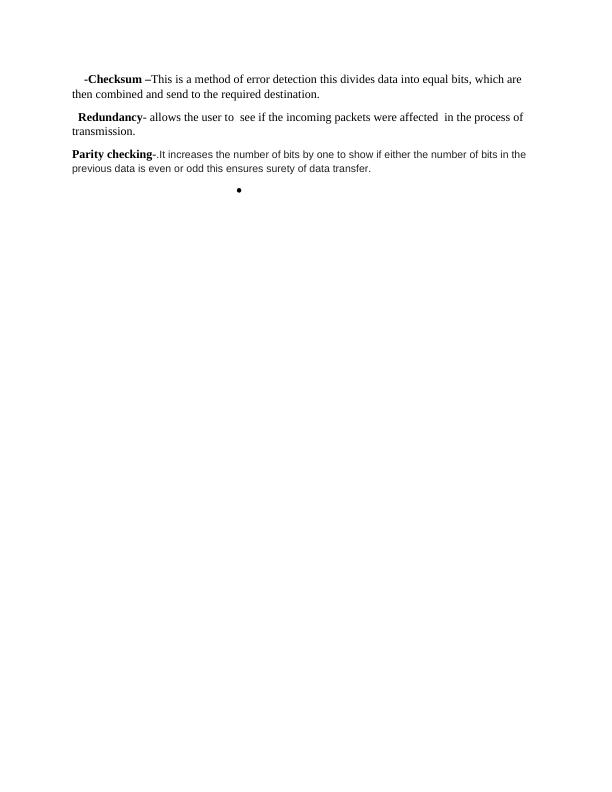Digital Encoding, Multiplexing Techniques and Network Communication Protocols
Calculate the data rate required for robot to remote controller communication, explain 3 types of suitable encoding techniques, write the status string in binary, represent the status string on ASK, FSK, and PSK encoding techniques, calculate the CRC for the status string, and explain other error control and flow control techniques.
Added on 2023-06-10
About This Document
Digital Encoding, Multiplexing Techniques and Network Communication Protocols
Calculate the data rate required for robot to remote controller communication, explain 3 types of suitable encoding techniques, write the status string in binary, represent the status string on ASK, FSK, and PSK encoding techniques, calculate the CRC for the status string, and explain other error control and flow control techniques.
Added on 2023-06-10
End of preview
Want to access all the pages? Upload your documents or become a member.



